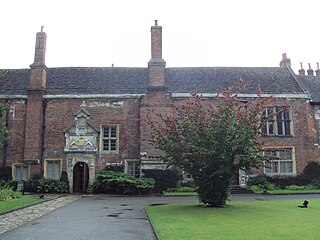
The Council of the North was an administrative body first set up in 1484 by King Richard III of England, to improve access to conciliar justice in Northern England. This built upon steps by King Edward IV of England in delegating authority in the north to Richard, duke of Gloucester, and in establishing the Council of Wales and the Marches.
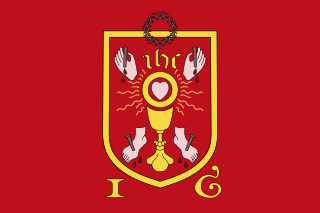
The Pilgrimage of Grace was a popular revolt beginning in Yorkshire in October 1536, before spreading to other parts of Northern England including Cumberland, Northumberland, Durham and north Lancashire, under the leadership of Robert Aske. The "most serious of all Tudor period rebellions", it was a protest against Henry VIII's break with the Catholic Church, the dissolution of the lesser monasteries, and the policies of the King's chief minister, Thomas Cromwell, as well as other specific political, social, and economic grievances.
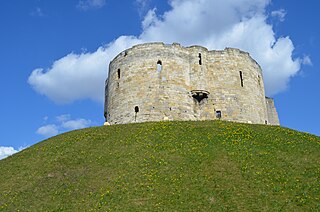
Robert Aske was an English lawyer who became a leader of the Pilgrimage of Grace uprising against the Suppression of Religious Houses Act 1535 in 1536. He was executed for treason against King Henry VIII on 12 July 1537.

Sir Marmaduke Constable of Flamborough, Yorkshire, was a courtier and soldier during the reigns of Richard III, Henry VII and Henry VIII.
Francis Dereham was a Tudor courtier whose involvement with Henry VIII's fifth Queen, Catherine Howard, in her youth, prior to engagement with the king, was eventually found out and led to his arrest. The information of Dereham having a relationship with Howard displeased King Henry to such great lengths he arranged the executions of all involved.
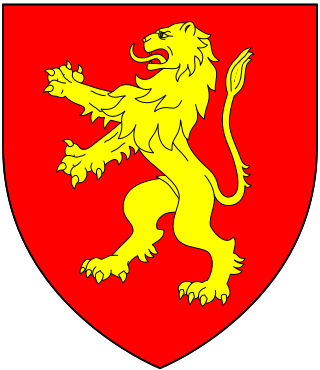
The Bulmer family were a noble family of Norman England, resident in Yorkshire. The family takes their name from Bulmer, North Yorkshire. The name Bulmer comes from English "Bull mere", a lake frequented by a bull, and is an Anglicised form of Gaelic "Búir na mara" from the Celtic tribe Brigantes during their occupation of the area. Ansketil de Bulmer was the first documented member of the Bulmer family who lived in the area in the twelfth century with the current spelling.

Kirk Hammerton is a village and civil parish in the Harrogate district of North Yorkshire, England. It is near the River Nidd and the A59 road, 10 miles (16 km) west of York. The village suffix refers to the Hamerton family who owned the land until the 16th century.
Sir Robert Constable was a member of the English Tudor gentry. He helped Henry VII to defeat the Cornish rebels at the Battle of Blackheath in 1497. In 1536, when the rising known as the Pilgrimage of Grace broke out in the north of England, Constable was one of the insurgent leaders, but towards the close of the year, he submitted at Doncaster and was pardoned. He did not share in the renewal of the rising, Bigod's rebellion, which took place in January 1537; but he refused the king's invitation to proceed to London, and was arrested, tried for treason, and hanged at Hull in the following June.
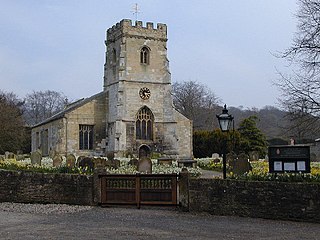
Settrington is a village and civil parish in North Yorkshire, England, about 3 miles (5 km) east of Malton. It was historically part of the East Riding of Yorkshire until 1974 and part of the Ryedale district from 1974 until 2023.
Events from the 1530s in England.

Thomas Darcy, 1st Baron Darcy of Darcy or of Temple Hurst, was an English nobleman, the only son, and heir, of Sir William Darcy and his wife, Euphemia Langton, the daughter of Sir John Langton. Darcy was opposed to the Dissolution of the Monasteries, and for his role in the Pilgrimage of Grace was convicted of high treason for delivering up Pontefract Castle to the rebels. He was executed on Tower Hill 30 June 1537.

Adam Sedbar or Sedbergh was the 23rd and last Abbot of Jervaulx Abbey in Wensleydale, Yorkshire.
Sir Francis Bigod was an English nobleman who was the leader of Bigod's Rebellion.
Sir Ralph Bulmer of Wilton in Yorkshire, was an English knight and soldier active on the Scottish border and during the war of the Rough Wooing.

Sir Thomas Percy was a participant in the 1537 Bigod's Rebellion in the aftermath of the Pilgrimage of Grace, a Catholic uprising against King Henry VIII. He was convicted of treason and hanged, drawn and quartered at Tyburn. The Catholic Encyclopedia (1913) states that he "is considered a martyr by many".

The fortifications of Kingston upon Hull consisted of three major constructions: the brick built Hull town walls, first established in the early 14th century, with four main gates, several posterngates, and up to thirty towers at its maximum extent; Hull Castle, on the east bank of the River Hull, protecting Hull's river harbour, constructed in the mid 16th century and consisting of two blockhouses and a castle connected by a curtain wall; and the later 17th century Citadel, an irregular triangular, bastioned, primitive star fort replacing the castle on the east river bank.
Thomas Moigne, of Willingham, Lincolnshire, was an English politician, executed for his part in the Lincolnshire Rising.
Sir Bevis Bulmer (1536–1615) was an English mining engineer during the reigns of Elizabeth I and James I. He has been called "one of the great speculators of that era". Many of the events in his career were recorded by Stephen Atkinson in The Discoveries and Historie of the Gold Mynes in Scotland, compiled in part from a lost manuscript by Bulmer entitled Bulmer's Skill.
Margaret Cheyne, later Margaret Bulmer, was a woman burned at the stake for high treason in the aftermath of the Pilgrimage of Grace and Bigod's Rebellion during the reign of Henry VIII of England.
John Hallam, conspirator, was a native of Cawkill, Yorkshire, and had much local influence and popularity.










